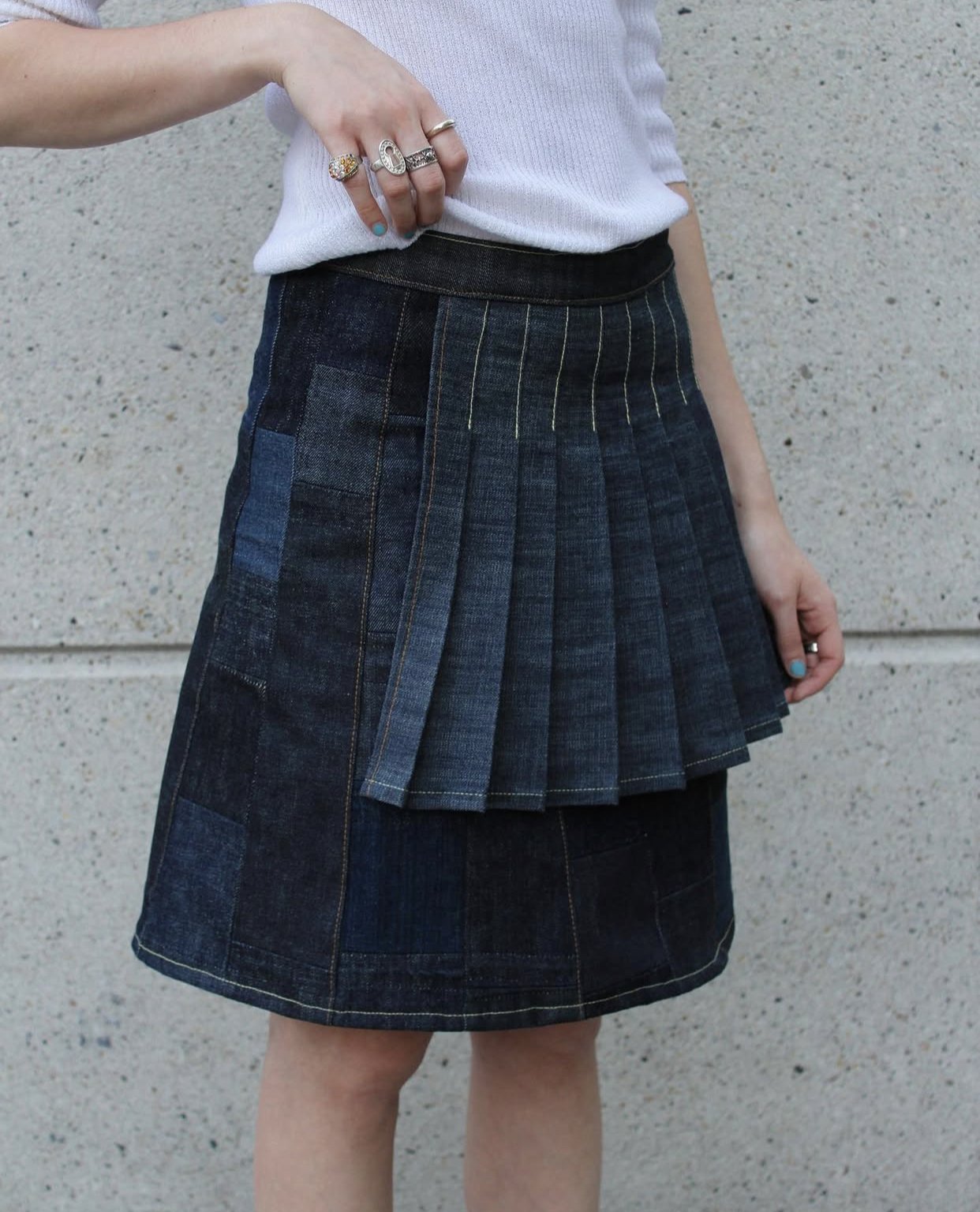From Alterations to Aritzia: How JCI Graduate Jacob Laing Found His Fit in Denim Design
With a foundation in fashion business, a hands-on path through tailoring, and a deep respect for craftsmanship, Jacob Laing is proving that the most compelling design stories are the ones built on curiosity, process, and care.
When you talk to someone who has found their place in the industry, a quiet confidence comes through. In conversation with JCI Fashion Business & Creative Arts graduate Jacob Laing, that confidence doesn’t come from bravado or trend-chasing—it comes from deep knowledge, years of practice, and a genuine love for the work.
Now working on Aritzia’s denim design team, Jacob’s career didn’t begin with sewing machines or mood boards. It started, like many fashion careers do, with a desire to understand the bigger picture.
“I went into JCI wanting to do buying,” he says. “That was the goal at first. But as I moved through the program, I realized it wasn’t the fit I thought it would be. What made JCI valuable was that I got to try everything. I didn’t just learn about one piece of the industry—I was exposed to all of it.”
It was through that exposure—assignments in visual merchandising, styling, editorial, and store concept development—that Jacob found himself gravitating toward design. The process of conceptualizing a space, building out a magazine, or putting together a visual identity felt natural to him. “I realized that the creative side—whether that was graphics or garments—is where I wanted to land.”
From Foundation to Fabric: A Career in Motion
After graduating during the early months of COVID, job opportunities in fashion were scarce. But thanks to a listing on JCI’s job board, Jacob landed a role at Dutil, a boutique denim retailer known for high-quality repairs, raw denim, and its cult-following of denim purists.
“I wasn’t in the hands-on design program at JCI,” he explains, “but I left with a strong understanding of how things are made—and how to talk about design with people. That helped me at Dutil, where so much of the job was translating what a customer wanted into technical execution.”
Day in and day out, Jacob altered, hemmed, repaired, and reconstructed jeans. And through that repetition, something shifted. “After working on thousands of pairs, you start to understand garments on an instinctual level. You know where the seams go, how the fabric reacts, what makes something look clean. It’s not theoretical anymore—it’s built into your hands.”
That deep technical intuition is something he still draws on every day. “You can draw and do collages as much as you want, but it’s not the same as taking a shirt apart and putting it back together. Both are valuable, but having that technical understanding of how clothes are made—it changes how you design.”
A Relationship with Denim
When Jacob talks about denim, it’s not just fabric—it’s history, culture, and storytelling. “There’s so much heritage in denim,” he says. “The reason it’s blue? That was out of necessity. The dye was what was available at the time. But now, blue jeans are one of the most universal garments in the world. Everyone owns a pair.”
At Dutil, he developed an appreciation for raw and selvedge denim, learning from coworkers and customers who had been immersed in the world for years. “They were kind of nerds about it,” he laughs. “And I say that in the best way possible. It was a community of people who genuinely cared about the details. Talking to them, you learn things you’d never find in a textbook.”
He even embraced some of the subculture’s more unconventional rituals. “At first, I thought it was wild when people said they hadn’t washed their jeans in a year and a half. But now I’ve done it too.”
The devotion to denim’s material integrity—the way it fades, wears, and molds to the body—has influenced the way Jacob designs today. “You think about what a person would have to do to get a certain wash. It’s not just aesthetics—it’s about storytelling. If the whiskers on a pair of jeans don’t make sense based on how they’d actually be worn, it feels off. That level of realism really matters.”
Design at Scale: Inside Aritzia
Now at Aritzia, Jacob’s role bridges creativity and process. “As creative as the work is, it’s also deeply intentional,” he says. “Every detail is a decision—down to the font size on a tag or the colour of thread on a pocket seam. At this level, nothing is random.”
Working in a large, cross-functional team has only deepened his respect for the behind-the-scenes process. “What’s been humbling is seeing how many people are involved in getting something to market. Even if someone’s role doesn’t directly touch design, I can still learn from them. There’s always something to absorb.”
One area he’s especially proud of is his contribution to trim design—a part of the brand that’s grown with his involvement. “When I joined, it was a smaller focus. I’ve been able to help expand that and bring more intention to it. Seeing a piece go from sketch to sample to store—there’s nothing like it. It’s a really satisfying full-circle moment.”
Advice for the Next Generation
Reflecting on his time as a student, Jacob is quick to acknowledge how far he’s come—and how much there is still to learn. For current students or recent grads, he offers two pieces of advice:
“First, stay true to your design identity—but stay open. So many students have strong opinions about what’s ‘good’ or ‘bad’ design. And while it’s great to have a point of view, remember—it’s still just an opinion. Stay curious.”
“Second, don’t overlook the technical side. It’s easy to get caught up in big creative ideas, but understanding construction is what allows you to actually execute those ideas. Ask yourself: how am I going to bring this to life? What fabric, pattern, or trim is going to tell this story?”
That mindset—equal parts visionary and grounded—is what makes Jacob’s work stand out. He isn’t just designing garments; he’s designing with history, with process, and with purpose.
Follow Jacob on Instagram here.
Called to pursue a career like Jacob’s? Explore our new innovative and integrated fashion program: Business of Fashion & Design. First cohort begins September 2025.







